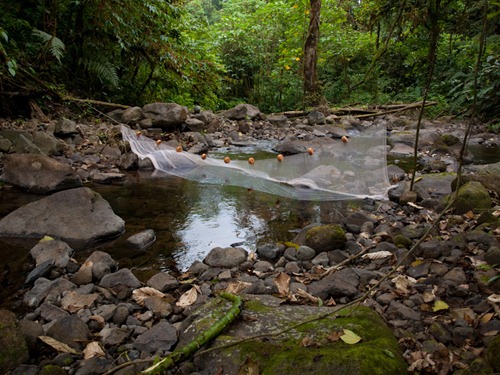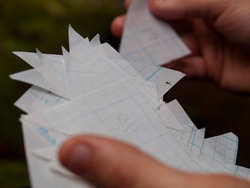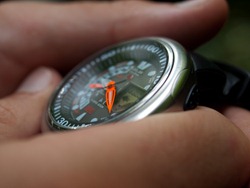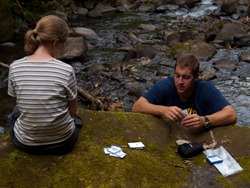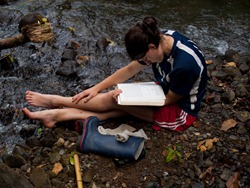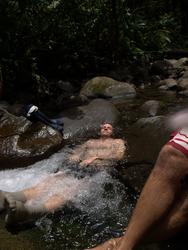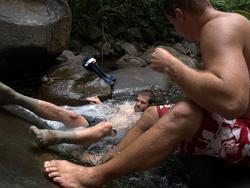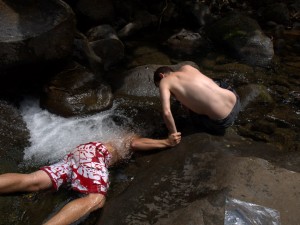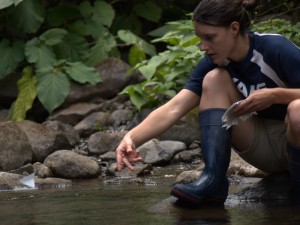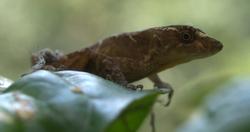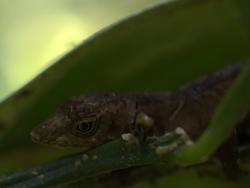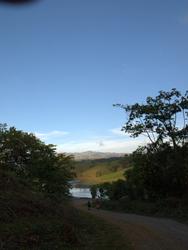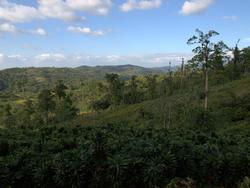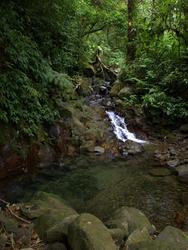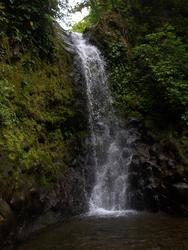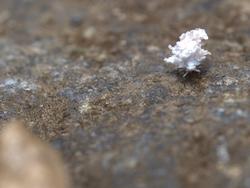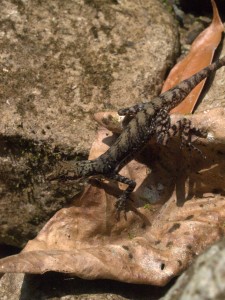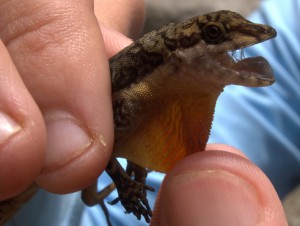No artificial leaves ever made it to the end of our 30-m release, where the seine was set for their capture. This is an interesting find, since litter biomass is relatively low in the stream itself; where is it going? Are tadpoles, which do appear to be abundant, processing litter?
Tag Archives: RBAMB
Trendy
Some of my first attempts to take some trendy macro photographs of various actions. These are a couple of samples of macro photos I took of research in San Ramon. Allison was usually in charge of releasing and calling out artificial leaves into the streams and Mike was timing the releases – thus, our two hand models. I wish that I had played around with the depth of field a little more on these, but I still think they came out well. It’s difficult to take this type of photograph in the field, particularly in a dark, canopy-covered stream bed.
Down-time
Any available free time in San Ramon, Mike, Erin, Allison and I played cards. We were addicted to cribbage and the bean game (Bohnanza), which was preferred by another student present in the reserve at the time: Kyle. Allison wasn’t quite as bad as the rest of us, reading a book on circadian biology filled with references to tropical organisms on the stream bed as we set up a mock cribbage table on a large boulder.
Relaxing… but cold
Little did we know.
Ground anole
Lowe’s and Los Lagos
While at the station in San Ramon, we decided to hike the 12 km down the mountian to buy some beer at Soda Los Lagos, a small restuarant at the bottom. On the way down, I took some pictures of ornamental plants being grown in the foreground, with mountainous rainforest in the background…. kind of sad but cool at the same time. The other picture shows Erin and Mike reaching Los Lagos with a team time of 2:23… which won me 2 free beers.
More Rio San Lorencito
Lichen bug
Stream anole
Stream anoles (Norops oxylophus) were scattered throughout the Río San Lorencito. Every chance I got, I caught them and examined their bright dewlap. They are a relatively large anole and were able to dive underwater, but more often would simple swim across the surface. Those that did make it underwater would be covered in a blue-ish shine where air bubbles were adhered to their scales.

